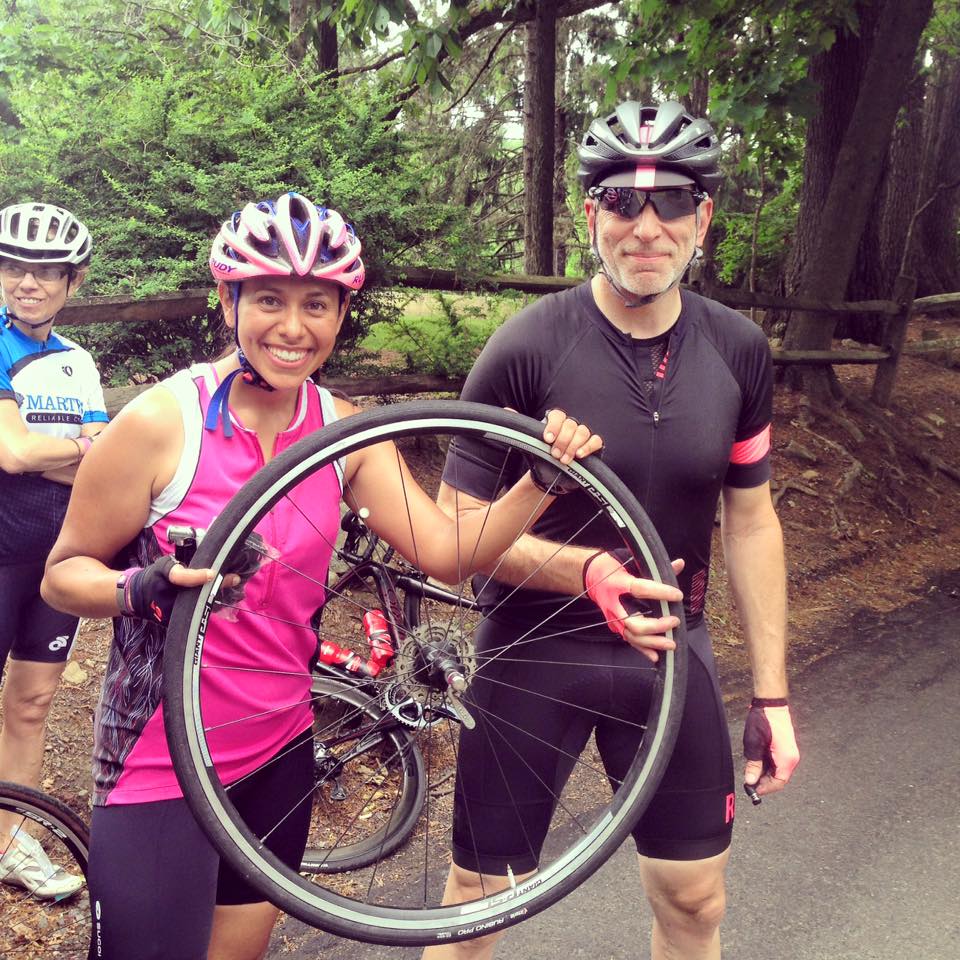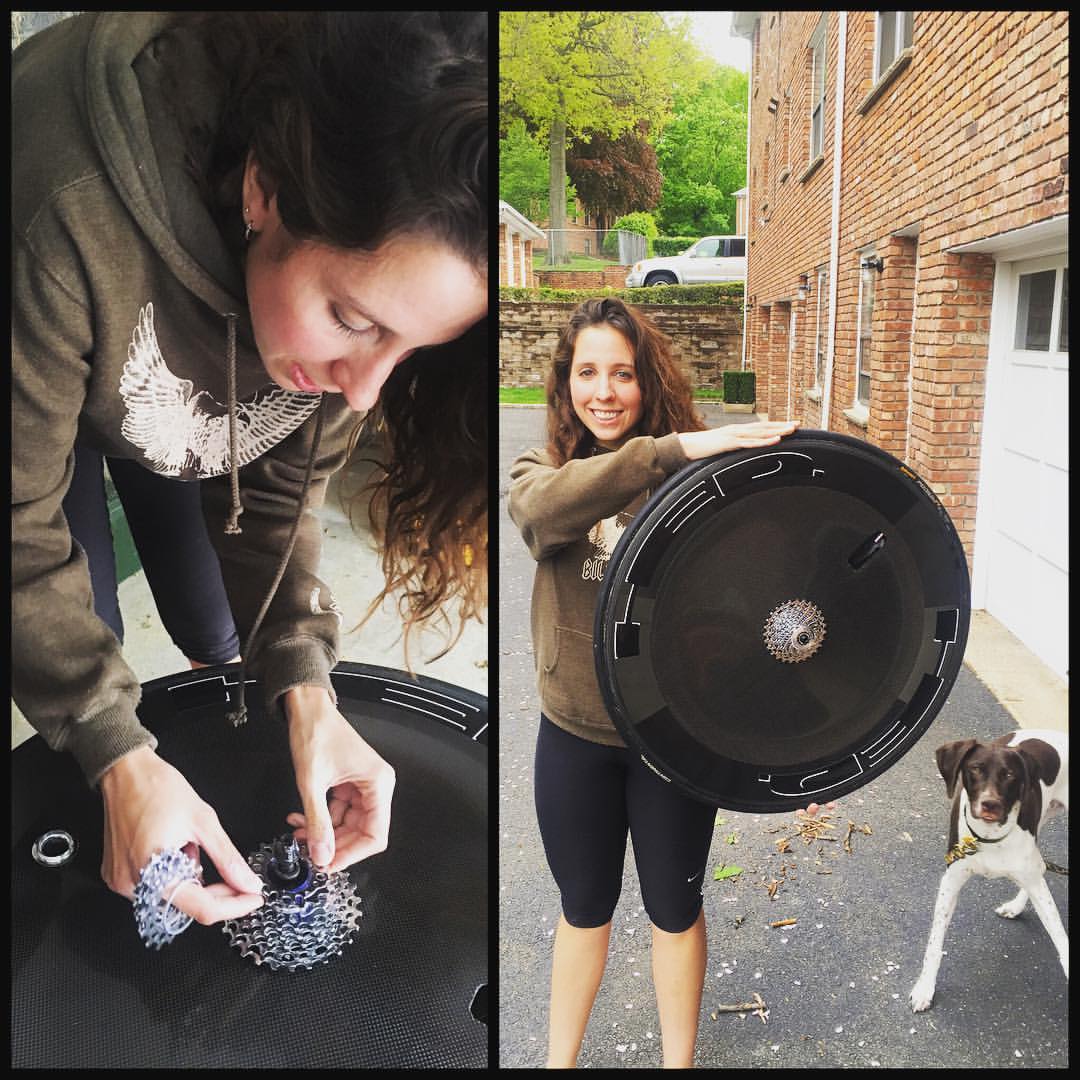You are rolling along enjoying the nice spring weather, the sun is shining, the birds are chirping and then you hit a nice long smooth stretch of road. You go to shift gears, but instead of hearing a nice smooth click you hear, “click, click, click, grind, click,” as your bike gets stuck in between gears. Eventually it clicks into the correct gear, but your enjoyment level has just dropped from one hundred percent down to about eighty five. You continue on riding and then all of a sudden, the ride starts to feel rough; you are no longer rolling along smoothly. You look down and see that you have a flat tire. Now your ride had gone from a fun stress relieving activity to an aggravating and stress inducing one.
It is always frustrating when your bike is not working properly. You just want to enjoy your ride, but instead you have to deal with whatever problem your bike is having until you can get home or get it to the bike shop. However, if you spend some time learning the basics of how your bike works you can probably save yourself some frustration by being able to prevent or solve more minor problems yourself. For example, keeping your chain clean and lubed will make your bike quieter and give you a smoother ride. There are little barrel adjusters on your brake and shifter cables that help to loosen or tighten your brakes, or help to make minor adjustments to your shifting when your bike doesn’t seem to be moving smoothly from gear to gear. Checking your tires periodically for wear and for cuts in the rubber can help you realize that a flat may be immanent and allow you to get a new tire on the bike before you even have an issue.

Changing a flat tire out on the road. It’s never fun to get a flat, but at least if you can change it you can continue on your way instead of having to call for a ride home.
How many times have you been on a ride and you, or someone else in the group has gotten a flat tire? Flat tires are part of the deal when riding bikes, if you ride long enough eventually you will get one. If you don’t know how to change your own flat then you can find yourself stuck, irritated, and waiting for a ride home. I know many people who ride around with a saddle bag full of flat changing gear, who don’t actually know how to actually change a flat tire. I also know people who are afraid to ride long distances because they don’t know this basic skill and don’t want to get stuck too far from home if a flat does occur. Instead of keeping their rides within a ten-mile radius of their house, why not just learn how to change the flat themselves. Honestly, there is no excuse for not learning this basic skill of bike maintenance. Pretty much every bike shop offers “fix-a-flat” clinics from time to time. Even stores like REI give lessons on how to inspect your tire, change out your tube and get yourself rolling along again. You can even take it a step further and take basic bike maintenance classes. Honestly, anything you can learn about the bike, will benefit you at some point if you ride enough.

Ready to ride again after getting a flat!
The other day I bought a rear disc wheel for one of my bikes. This wheel needed a cassette installed on it and I decided that instead of bringing it to the shop, I would buy a cassette and install it myself (with some supervision). I know some of the basics of bike maintenance, but I had never installed a cassette and wanted to give it a try. It really wasn’t that hard to keep the cogs in order and get them onto the wheel correctly. The toughest part was using a cassette tool to get it tightened on the wheel correctly, (which I had help with) nevertheless, it is empowering to know that I could install a cassette on another wheel if I had to.

Learning how to install a cassette on my new wheel.
I believe that knowing some of the ins and outs of how my bike works has made me able to enjoy riding more. It has allowed me to help others and also to know when my bike just needs a minor adjustment versus when something is truly wrong. I am definitely not ready to apply for the job of head mechanic at the local bike shop and do defer to the experts for more complex problems, but I feel a sense of empowerment when I can install a cassette or change my own flat tire or adjust my brakes a little bit on the road. Even knowing all of these things, I still recommend taking your bike into the shop for an overhaul once a year to let someone with more experience make sure everything is well adjusted and working properly. Learning more about your bike and keeping it tuned up gives you a greater chance to get out and enjoy the spring weather with confidence that your bike is a well-oiled machine.